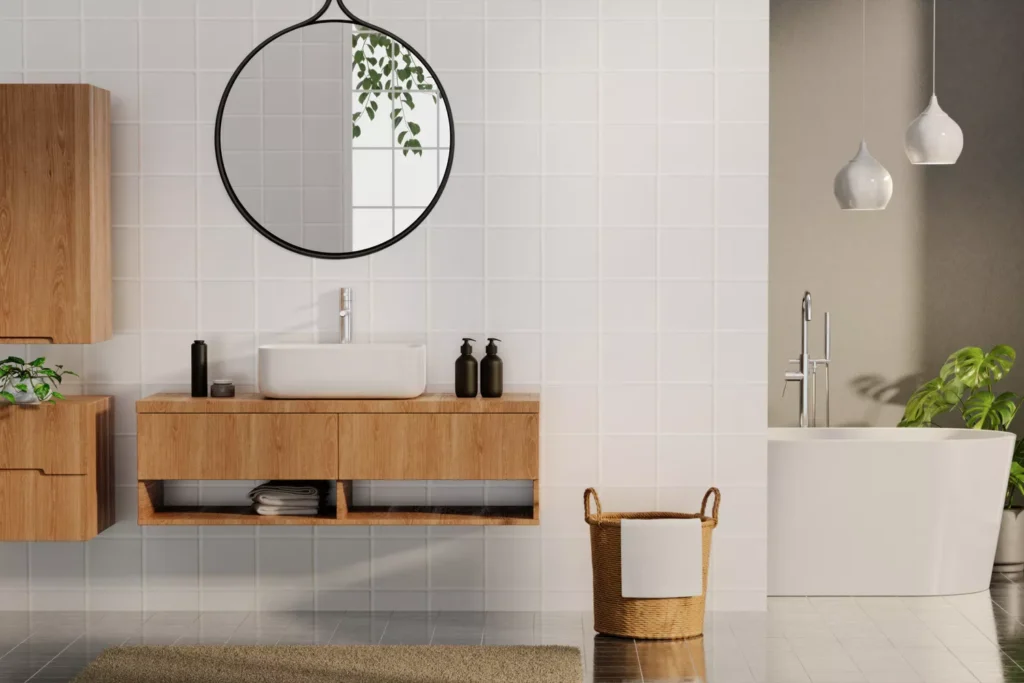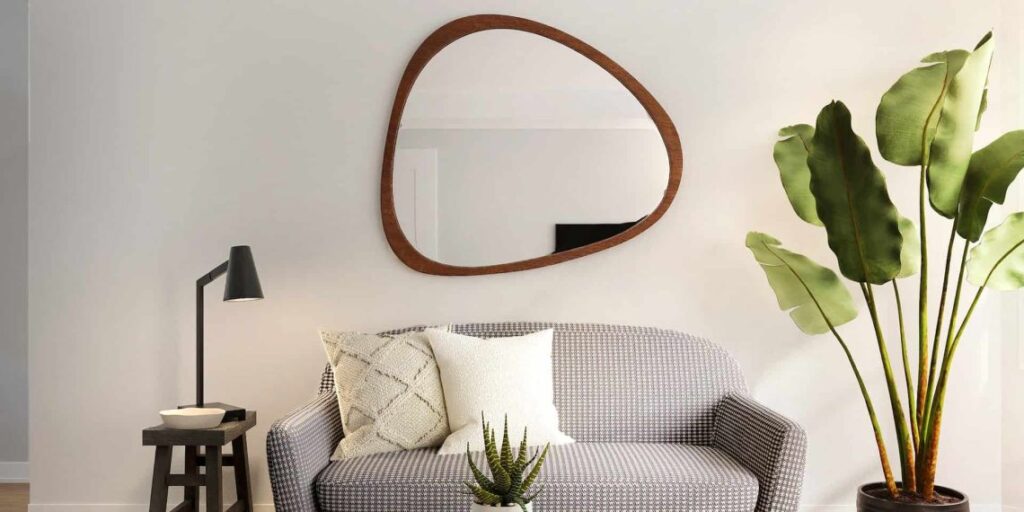There has never been a time when I haven’t shared a bathroom. From sharing with my sister to college dorm-mates, post-college roommates, my now-husband, and then our kids (our family of four has shared one bathroom for the last eight years!). Storage has been a challenge at each stage, whether for hair tools or bath toys. Kelley Jonkoff, a professional organizer and founder of Unfolde in Raleigh, North Carolina, says getting bathroom stuff under control has both visual and mental benefits. ‘The bathroom is where we prepare for each day and unwind. It’s a place for taking stock, so it can be negative if it’s too cluttered or messy.’
To figure out storage needs, start by taking inventory. ‘The first step is to edit and minimize,’ says Jonkoff. Limit items to daily use. Extra towels or backup soap can be in a nearby closet if possible. Discard items you don’t use. ‘People hold on to makeup, skincare, or hair products they’ve tried, even if they don’t work. There’s a lot of trial and error, and people think they should keep things they spent money on. But clutter causes stress. Treat your bathroom like a spa.’
Jonkoff recommends using small, clear bins to easily locate items. She suggests adding a single shelf to the wall near your sink, which is ideal for daily use items such as skincare products, toothbrushes, toothpaste, and medicines. This setup is particularly beneficial for individuals with executive function or neurodivergence challenges, as it keeps essentials front and center. A simple picture ledge or spice rack can suffice, and for less visually appealing items, display beautiful skincare products instead.
If you don’t have a medicine cabinet or it’s already full, consider installing narrow shelving on an unobstructed wall to keep your most-used items within arm’s reach. Shelves with a lip or rail are useful to prevent wet items from sliding off. Alternatively, a shallow cabinet with doors can be utilized for makeup and skincare essentials.
For those who can’t drill into walls, a freestanding shelving unit over the toilet is a modern and space-saving option. It tucks up and behind the toilet, providing additional storage with clean lines and a slim frame.
Jonkoff advises making use of the vertical space in under-sink cabinets with shelf risers, which is perfect for less frequently used items like a waxing kit or nail polish. This approach minimizes discomfort from bending and reaching multiple times a day.
Bins can be placed above or underneath shelf risers to organize smaller items, making them easy to access. Jonkoff prefers stackable clear bins with pull-out drawers for maximum product accessibility.
To efficiently use vanity drawers, Jonkoff suggests compartmentalizing them with small bins or dividers. This method helps to fill the space more effectively and makes it easier to find items. She uses graph paper to map out drawer interiors and configure them optimally. Shallow drawer organizers with rubber feet are a favorite, and reusing small boxes, like Apple product boxes, is also an excellent idea for organization.
09 of 17: Store Makeup in Clear Bins. For deeper drawers, taller clear bins are great for keeping small products like makeup and serums vertical and grouped. The Home Edit bins are a favorite for in-drawer makeup storage, especially with matching bin dividers. The small size makes them easy to pull out while doing makeup and then put away.
10 of 17: Use a Shelf Liner. While bins are useful, it’s rare to find ones that fit drawers perfectly. So, in addition to bins, line the bottoms of drawers with a shelf liner with a little tack to keep things from rolling. Plastic liners work well as they’re not damaged by water. 11 of 17: Use Over-the-Door Baskets for Hair Tools. Inside big open vanities, over-the-door baskets are great for unwieldy hair tools that don’t stack easily or fit in a drawer. They keep cords from becoming a mess. 12 of 17: Add Skinny Rolling Shelves. If you lack interior storage space, consider a narrow rolling shelving unit that can slide between a vanity and toilet or under a pedestal sink. This provides more storage for items like lotion, makeup, or hair products. For smaller items like cotton balls or makeup remover pads, use tall, clear containers to store them neatly. 13 of 17: Use Vertical Shower Caddies. The tub or shower area can get cluttered quickly. Be thoughtful about what you keep there. For daily-use items, keep them organized in over-the-shower caddies or corner tension pole caddies. The 10 Best Shower Caddies You Can Buy Online. 14 of 17: Hook it Up. Inside the shower stall, a suction hook or Command bath hook is useful for ‘strategic things’ like a loofah or pumice stone that should hang dry between uses. 15 of 17: Buy Smaller Items. Jumbo-sized shampoo and body wash might not be the best choice for a shower stall. Be realistic about product usage and savings compared to the frustration of a cluttered bathing area. 16 of 17: Use the Back of Your Doors. On wooden doors, install simple two-prong metal hooks in the same finish as other bath hardware for hanging towels and robes.When organizing a bathroom, consider the needs of all users, including children. Hang items at different heights to accommodate everyone. For children, place items within their reach, while adults can use higher hooks. Utilize heavy-duty adhesive hooks for hollow-core doors to ensure stability and safety. These hooks are perfect for hanging towels and other bathroom essentials. If you have a closet or storage space nearby, consider using it as a linen closet to store extra bath towels and bulk items. This can help declutter your bathroom and keep it organized. Even placing a narrow cabinet just outside the bathroom door can provide additional storage space, giving you more room to maneuver inside the bathroom. Was this page helpful? Thanks for your feedback! Tell us why! Other Submit


